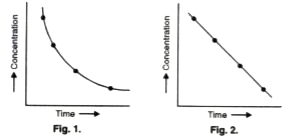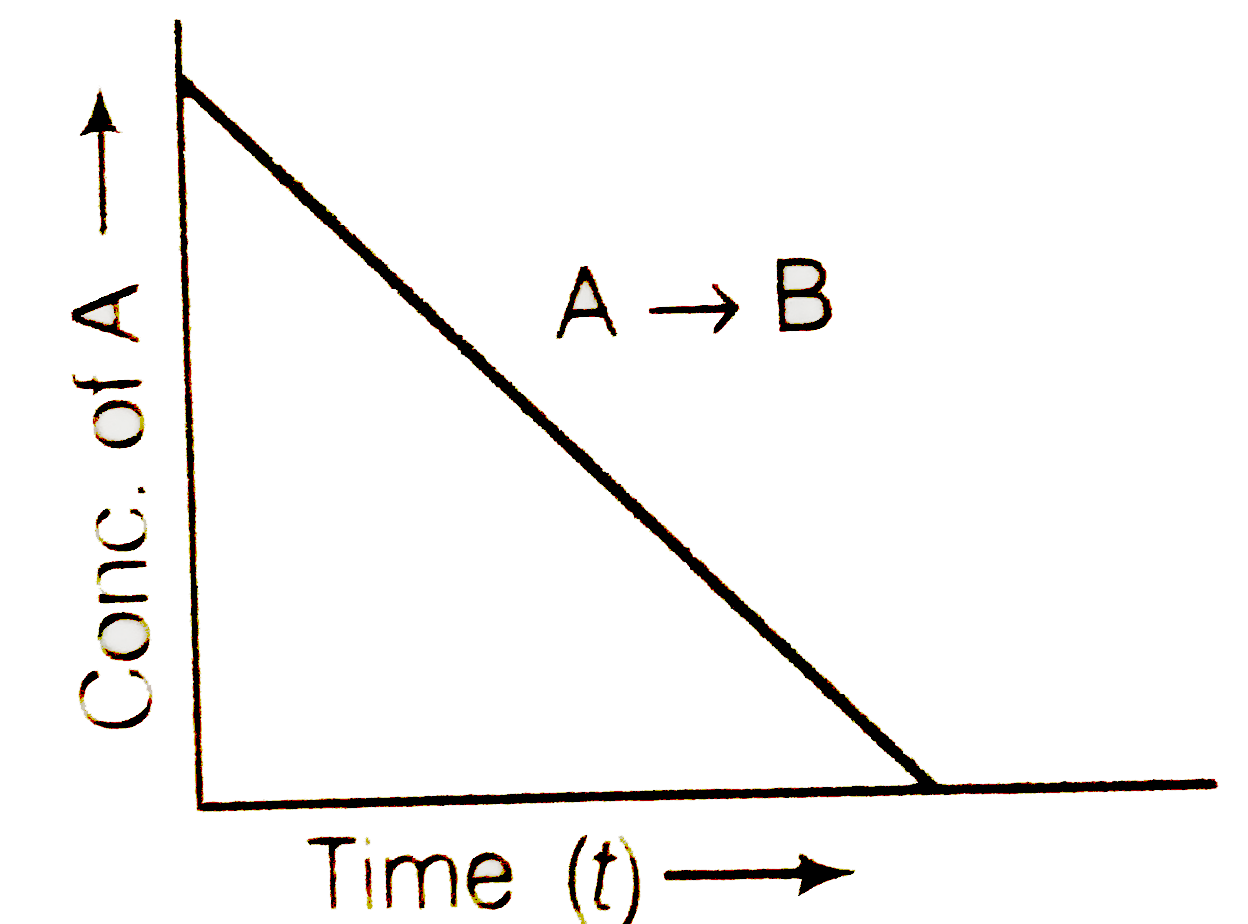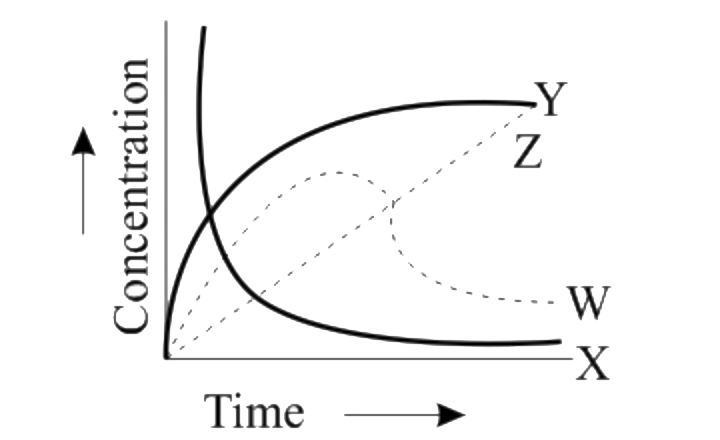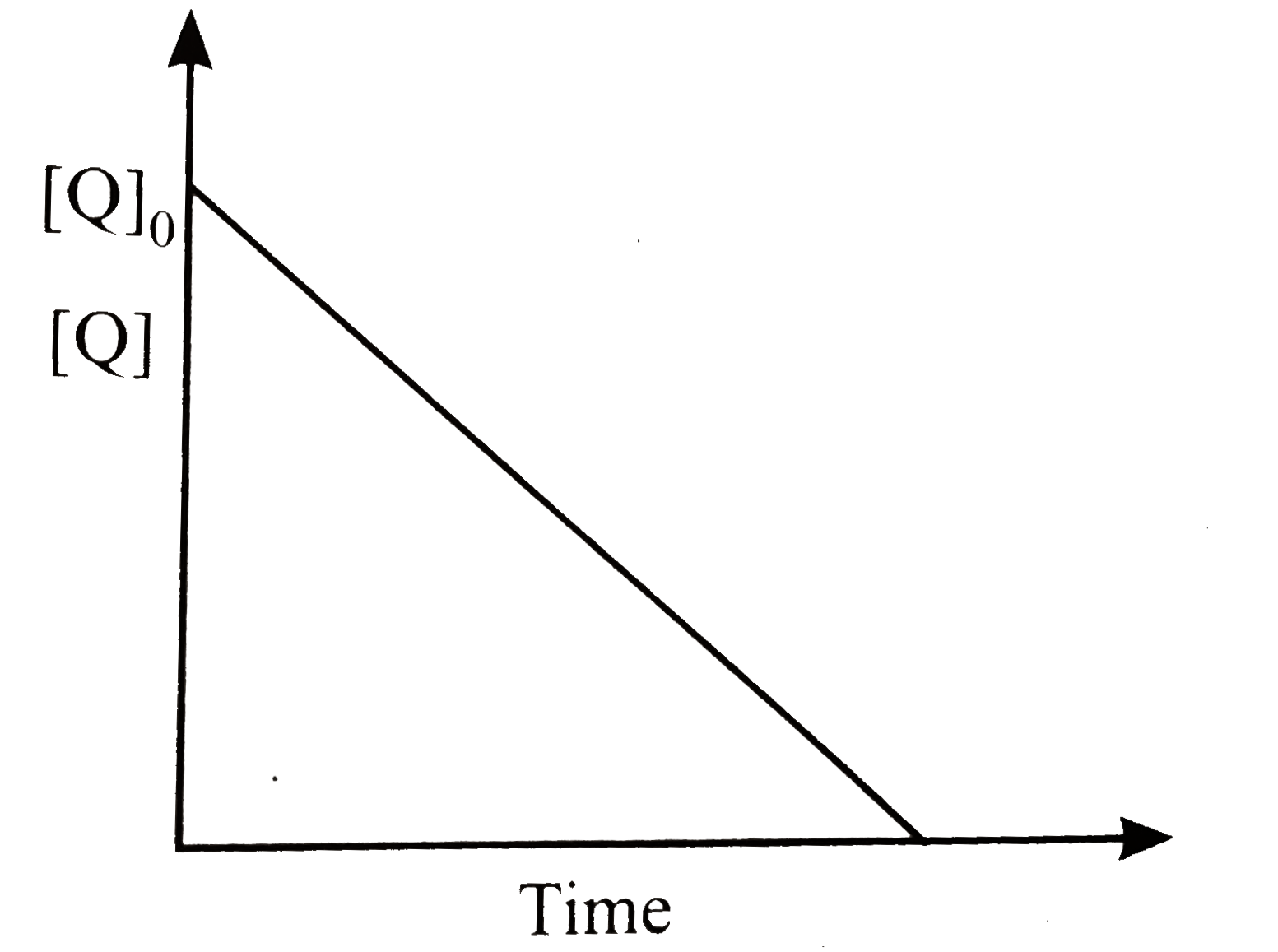In the reaction A→ B , if the concentration of A is plotted against time, the curves obtained will be as shown in Fig. 1 and 2. Predict the order of the reactions.

Fig. 1: First order, Fig 2: Zero order.
Topper's Solved these Questions
- BOOK - ICSECHAPTER - CHEMICAL KINETICSEXERCISE - EXERCISE (PART- II (DESCRIPTIVE QUESRTIONS) B. SHORT ANSWER QUESTIONS )119videos
CHEMICAL KINETICS
- BOOK - ICSECHAPTER - CHEMICAL KINETICSEXERCISE - EXERCISE (PART- II (DESCRIPTIVE QUESRTIONS) C.LONG ANSWER QUESTIONS )54videos
CHEMICAL KINETICS
- BOOK - ICSECHAPTER - CHEMICAL KINETICSEXERCISE - EXERCISE (PART- I (OBJECTIVE QUESRTIONS) D. MATCH THE FOLLOWING )3videos
CHEMICAL KINETICS
- BOOK - ICSECHAPTER - BIOMOLECULESEXERCISE - ISC EXAMINATION QUSTIONS (PART-I)(DESCRIPTIVE QUESTIONS)21videos
BIOMOLECULES
- BOOK - ICSECHAPTER - CHEMISTRY IN EVERYDAY LIFEEXERCISE - EXERCISE (PART - II (DESCRIPTIVE QUESTIONS) (LONG ANSWER QUESTIONS))19videos
CHEMISTRY IN EVERYDAY LIFE
Similar Questions
For a general reaction A→B, plot of concentration of A vs time is given in figure. Answer the following questions on the basis of this graph.
(i) what is the order of the reaction?
(ii) What is the slope of the curve ?
(iii) What are the units of rate constant?
 View Solution
View SolutionFor the reaction R⇔P Variation of concentration is plotted against time

Which of the following regions show (s) equilibrium ?View SolutionWhen pH or temperature is plotted against enzyme activity the shape of curve obtained is
View SolutionConsider the reaction R→P for which the change in concentration of R with time is shown by the following graph:
( i) Predict the order of reaction .
( iii) What does the slope of the curve indicate ?
( b) The rate of reaction quadruples when temperature chages from 293 K of 313 K .Calculate Ea assuming that it does not chage with time [R=8.314JK−1mol−1]
 View Solution
View SolutionIn the reaction A+B→C+D, the rate (dxdt) when plotted against time 't' gives a straight line parallel to time aixs.
The order and rate of reaction will be:View SolutionFor a reaction A→B , the rate of reaction becomes twenty seven times when the concentration of A is increased three times. What is the order of the reaction?
View SolutionFor a reaction A→B , the rate of reaction becomes twenty seven times when the concentration of A is increased three times. What is the order of the reaction?
View SolutionFor a reaction A→B , the rate of reaction becomes twenty seven times when the concentration of A is increased three times. What is the order of the reaction?
View SolutionFor the reaction, A+B→C+D. The variation of the concentration of the products is given by the curve.
 View Solution
View SolutionIn the reaction, P+Q→R+S
the time taken for 75% reaction of P is twice the time taken for 50% reaction of P. The concentration of Q varies with reaction time as shown in the figure. The overall order of the reaction is
 View Solution
View Solution

